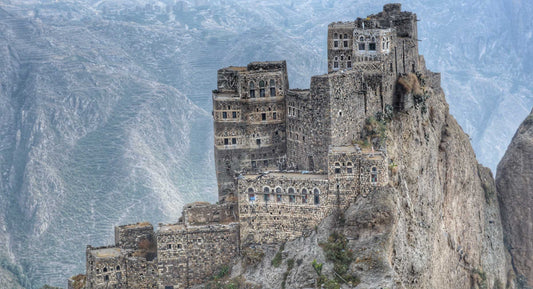Guatemalan coffee is revered around the world for its rich flavours, diverse growing conditions, and deep-rooted history. This article takes an in-depth look at ten fascinating aspects of Guatemalan coffee, from its cultivation and regional distinctions to the challenges faced by farmers and the cultural significance of coffee in Guatemala.
Introduction to Guatemalan Coffee
Overview of the Coffee Industry in Guatemala
Guatemala is one of the world's leading producers of high-quality Arabica coffee beans. The coffee industry is a cornerstone of the Guatemalan economy, playing a vital role in both GDP and employment. With over 125,000 families engaged in coffee production, the sector creates more than half a million jobs annually, making it the highest employment rate in the country.
Coffee trade in Guatemala is valued at approximately $700 million, representing a crucial export commodity that has shaped the economic landscape. The country's diverse microclimates, volcanic soil, and high altitudes contribute to some of the most complex and desirable coffee profiles, making Guatemalan coffee a favourite among roasters and coffee enthusiasts worldwide.
The Significance of Coffee to the Guatemalan Economy
Coffee is more than just a crop in Guatemala; it is an economic backbone that supports a significant portion of the population. The industry plays a pivotal role in the livelihoods of many rural communities, particularly smallholder farmers who cultivate less than 2 hectares of land. These small farms account for about 44% of the country's coffee production.
In addition to its economic importance, coffee production supports numerous secondary industries, including transportation, processing, and export logistics. The revenue generated from coffee exports helps fund infrastructure development and social programs, further underscoring its vital role in Guatemala's economic health.
Coffee Growing Regions in Guatemala
Guatemala's diverse topography and climate conditions create ideal environments for coffee cultivation. The country is divided into several distinct coffee-growing regions, each with unique characteristics and flavour profiles.

Antigua
Antigua is perhaps the most famous coffee-growing region in Guatemala. Known for its rich volcanic soil and low humidity, Antigua produces coffee with a smooth, balanced flavour profile, featuring notes of chocolate and caramel. The region's three volcanoes—Agua, Fuego, and Acatenango—provide mineral-rich ash that enriches the soil, contributing to the coffee's unique taste.
Altitude: 1,500–1,700 meters (4,900–5,600 feet)
Harvest: January–March
Varieties: Bourbon, Caturra, Catuai
Huehuetenango
Huehuetenango, located in the western highlands, is one of the highest coffee-growing regions in Guatemala. The region's non-volcanic mountains provide ideal conditions for coffee cultivation. Huehuetenango coffee is known for its bright acidity, full body, and wine-like notes.
Altitude: 1,500–2,000 meters (4,900–6,600 feet)
Harvest: January–April
Varieties: Bourbon, Catuai, Caturra
Atitlán
The coffee farms around Lake Atitlán benefit from rich volcanic soil and unique climatic conditions influenced by the daily winds known as xocomil. These conditions produce coffee with bright citrus acidity and a full body, making Atitlán coffee highly aromatic and flavourful.
Altitude: 1,500–1,700 meters (4,900–5,600 feet)
Harvest: December–March
Varieties: Bourbon, Typica, Caturra, Catuai
Cobán
Named after the town of Cobán, this region is characterized by its lush rainforest and wet climate. The constant humidity poses challenges for coffee drying, but the region's unique environment produces stunning coffees with distinctive flavours.
Altitude: 1,300–1,500 meters (4,300–4,900 feet)
Harvest: December–March
Varieties: Bourbon, Maragogype, Catuai, Caturra, Pache
Nuevo Oriente
Located in the eastern part of Guatemala, Nuevo Oriente has a drier climate and is primarily composed of smallholder farms. Coffee production began here in the 1950s, and the region produces coffee with a balanced flavour profile and excellent quality.
Altitude: 1,300–1,700 meters (4,300–5,600 feet)
Harvest: December–March
Varieties: Bourbon, Catuai, Caturra, Pache
Fraijanes
Surrounding the capital city of Guatemala, Fraijanes is known for its regular volcanic activity, which enriches the soil with minerals. Despite the challenges posed by urban expansion, Fraijanes continues to produce high-quality coffee with bright acidity and a sweet mouthfeel.
Altitude: 1,400–1,800 meters (4,600–5,900 feet)
Harvest: December–February
Varieties: Bourbon, Caturra, Catuai, Pache
Climate and Geography
Guatemala's diverse climate and geography play a significant role in the unique flavours of its coffee. The country boasts over 300 microclimates, with rainfall ranging from 800 to 5,000mm annually. Coffee is grown at altitudes from 1,300 to 2,000 meters above sea level, allowing the cherries to mature slowly and develop complex flavours.
The Role of Volcanic Soil and High Altitudes
The volcanic soil in many of Guatemala's coffee-growing regions is rich in minerals, which enhances the nutritional content of the coffee plants. This contributes to the distinctive taste profiles of Guatemalan coffee, characterized by bright acidity, full body, and a range of flavour notes from fruity to chocolatey.
High altitudes also play a crucial role in the quality of Guatemalan coffee. The cooler temperatures at higher elevations slow down the maturation process of coffee cherries, allowing them to develop more sugars and resulting in a sweeter, more flavourful bean.
History of Coffee Cultivation in Guatemala
The Origins of Coffee Cultivation
Coffee was first introduced to Guatemala by Jesuit missionaries around 1750. Initially grown for ornamental purposes, coffee became an important crop in the mid-19th century when the demand for indigo, the country's primary export, declined. The government encouraged coffee cultivation by distributing seeds and providing educational materials to farmers.
Key Historical Milestones
In the late 1800s, coffee became the backbone of Guatemala's economy. By 1880, coffee accounted for about 90% of the country's exports. The global depression in 1930 led to efforts to lower coffee prices to stimulate exports. President Jorge Ubico's policies favoured large American corporations like the United Fruit Company, leading to significant land distribution issues.
The democratic era of the 1950s saw attempts at land reform to redistribute land to small farmers. However, these efforts were thwarted by a CIA-backed coup in 1954, which set the stage for a civil war that lasted until 1996. Despite these challenges, the coffee industry has remained a crucial part of Guatemala's economy.
Impact of the Civil War on Coffee Production
The Civil War (1960-1996)
The Guatemalan Civil War, which lasted from 1960 to 1996, had a profound impact on the country's coffee industry. The conflict arose from longstanding issues of land inequality, poverty, and social injustice, particularly affecting the rural indigenous population. The civil war resulted in widespread violence, human rights violations, and economic instability, all of which severely disrupted coffee production.
During the civil war, many coffee farms were abandoned as farmers fled the violence or were forcibly displaced. The conflict also led to the destruction of infrastructure, including roads and processing facilities, making it difficult to transport and process coffee. Additionally, the war created an environment of fear and uncertainty, discouraging investment in the coffee sector.

Post-War Recovery
After the peace accords were signed in 1996, efforts to revive the coffee industry began. The government and various organizations implemented programs to support displaced farmers and rebuild the necessary infrastructure for coffee production. These initiatives aimed to restore the industry's productivity and improve the livelihoods of those affected by the war.
Despite these efforts, the legacy of the civil war continues to affect the coffee industry in Guatemala. Many of the underlying issues that contributed to the conflict, such as land inequality and poverty, remain unresolved. Additionally, the trauma and disruption caused by the war have left lasting scars on the rural communities that rely on coffee production for their livelihoods.
Traditional Coffee Farming Practices
Traditional Methods of Cultivation and Processing
Guatemalan coffee is traditionally shade-grown under a canopy of trees, which helps maintain soil health and provides habitat for wildlife. Most coffee is hand-picked to ensure only ripe cherries are harvested. The beans are typically washed to remove the fruit, a process that enhances their brightness and clarity.
Traditional farming practices contribute significantly to the quality of Guatemalan coffee. Hand-picking ensures that only the best cherries are processed, and shade-growing helps develop the beans' complex flavours. The washing process further refines the coffee's taste, resulting in a clean, vibrant cup.

Impact on Quality
Traditional farming practices contribute significantly to the quality of Guatemalan coffee. Hand-picking ensures that only the best cherries are processed, and shade-growing helps develop the beans' complex flavours. The washing process further refines the coffee's taste, resulting in a clean, vibrant cup.
Challenges Facing Guatemalan Coffee Farmers
Climate Change
Climate change poses a significant threat to coffee production in Guatemala. Rising temperatures and unpredictable weather patterns can affect flowering and fruiting cycles, leading to lower yields and quality. Additionally, increased incidence of pests and diseases, such as coffee leaf rust, further threatens the industry.
Economic Factors
Global coffee prices fluctuate widely, creating economic uncertainty for farmers. Many smallholder farmers struggle to cover production costs, especially when market prices are low. The high cost of inputs, such as fertilizers and labour, exacerbates these challenges, making it difficult for farmers to sustain their operations.
Labour Shortages
The coffee industry relies heavily on manual labour for harvesting and processing. However, labour shortages have become a pressing issue in Guatemala. Many rural workers migrate to urban areas or other countries in search of better opportunities, leaving coffee farms understaffed during critical periods.
Specialty Coffee and Sustainability Initiatives
The Rise of Specialty Coffee
Specialty coffee has gained prominence in Guatemala as farmers focus on producing high-quality beans that fetch premium prices. The specialty coffee market values unique flavour profiles, traceability, and sustainable farming practices, providing an opportunity for Guatemalan farmers to differentiate their products and increase their income.
Sustainable Farming Practices
Many farmers in Guatemala have adopted sustainable farming practices to improve soil health, conserve water, and protect biodiversity. Shade-grown coffee, organic farming, and agroforestry systems are common approaches that enhance sustainability and contribute to the long-term viability of coffee production.
Fair trade initiatives also play a crucial role in supporting sustainable practices and ensuring that farmers receive fair compensation for their labour. By participating in fair trade programs, farmers can access better prices and receive additional premiums for organic and sustainably produced coffee.

The Coffee Export Market
Major Markets
Guatemalan coffee is highly sought after in international markets. The United States is the largest importer of Guatemalan coffee, accounting for approximately 49% of exports. Other significant markets include Japan, Canada, and Germany. The global demand for high-quality Guatemalan coffee continues to grow, driven by consumers' appreciation for its unique flavours and consistent quality.
The Role of Cooperatives and Direct Trade Relationships
Cooperatives play a vital role in the Guatemalan coffee industry by providing farmers with access to resources, training, and market opportunities. These organizations help smallholder farmers improve their production practices, achieve certification, and negotiate better prices for their coffee.
Direct trade relationships between farmers and roasters have also become increasingly popular. These arrangements bypass traditional intermediaries, ensuring that more profits go directly to the producers. Direct trade fosters strong partnerships based on mutual trust and transparency, benefiting both farmers and roasters.
Coffee Culture in Guatemala
Cultural Significance
Coffee is deeply embedded in Guatemalan culture. It is more than just a beverage; it symbolizes hospitality, community, and tradition. Coffee is often shared during social gatherings and is an integral part of daily life for many Guatemalans.
Traditions and Festivals
Guatemala celebrates its coffee heritage through various festivals and events. The National Coffee Festival, held annually, showcases the best coffees from different regions and honours the hard work of farmers. These events highlight the cultural importance of coffee and promote its appreciation among locals and visitors alike.
Tips for Buying and Brewing Guatemalan Coffee
What to Look For
When purchasing Guatemalan coffee, look for beans labelled by their specific region, as each area offers distinct flavour profiles. Ensure the coffee is freshly roasted and has clear traceability to guarantee its authenticity and quality.
Recommended Brewing Methods
To bring out the best flavours of Guatemalan coffee, consider using the following brewing methods:
Pour Over: This method allows for precise control over the brewing process, highlighting the coffee's nuanced flavours.
French Press: The immersion technique of the French press brings out the rich, full-bodied characteristics of Guatemalan coffee.
Cold Brew: Perfect for highlighting the coffee's natural sweetness and low acidity, cold brew is ideal for hot summer days.
Guatemalan coffee is a testament to the country's rich agricultural heritage and dedication to quality. From its diverse growing regions and traditional farming practices to the challenges faced by farmers and the cultural significance of coffee, there is much to appreciate about this beloved beverage. Whether you are a seasoned coffee connoisseur or a casual drinker, exploring the world of Guatemalan coffee is a journey worth taking.




